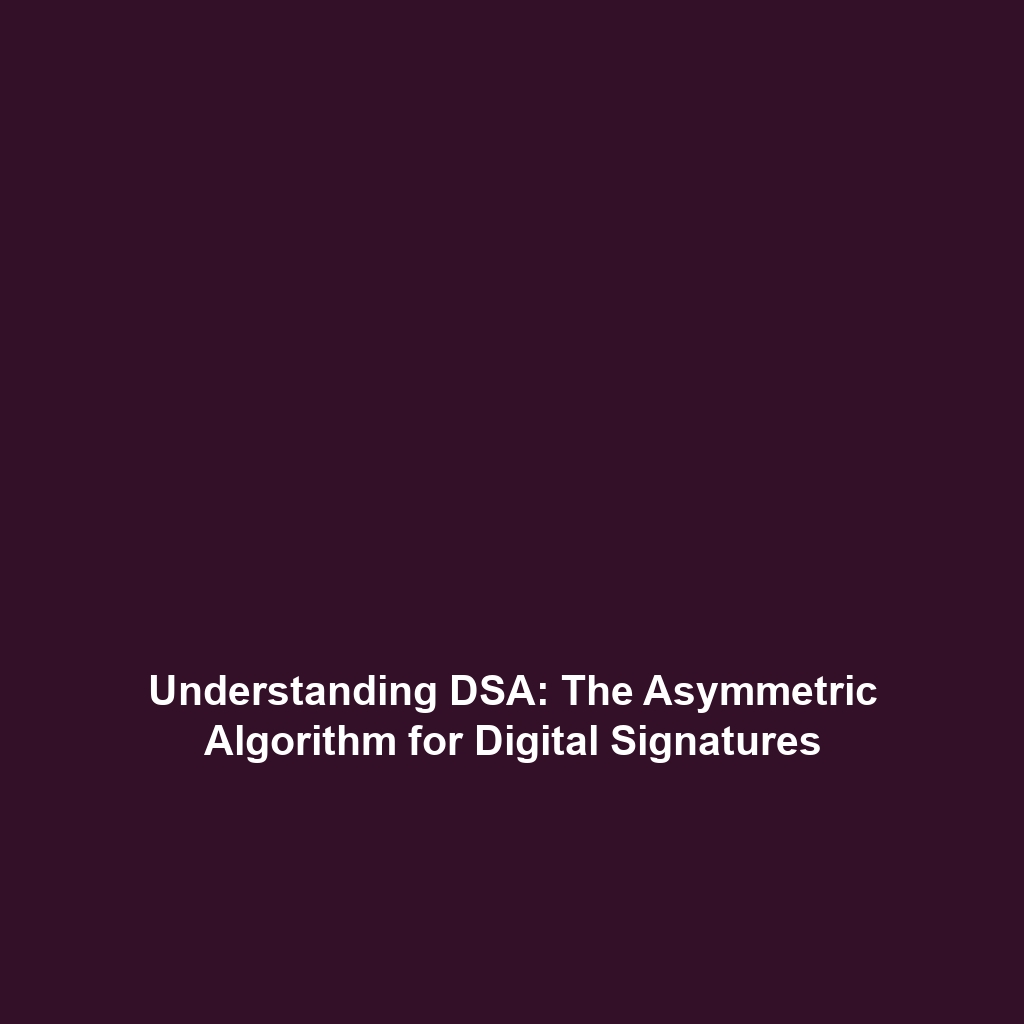Elliptic Curve Cryptography (ECC): An Overview
Introduction
Elliptic Curve Cryptography (ECC) is a revolutionary approach in the field of cryptography, born out of the need for stronger security protocols in the digital age. It offers a robust method for encrypting and decrypting data while providing significant efficiency advantages over traditional cryptographic systems. With the constant evolution of cyber threats, understanding the principles and implications of ECC is essential for securing communications in various applications, from banking to data transmission. This article delves into the key concepts, applications, challenges, and future research surrounding ECC within the broader field of cryptography.
Key Concepts of Elliptic Curve Cryptography
How ECC Works
ECC is based on the algebraic structure of elliptic curves over finite fields. Unlike traditional cryptographic methods like RSA, ECC can achieve equivalent levels of security with much smaller key sizes, resulting in faster computations and lower power consumption. The core of ECC is the difficulty of the Elliptic Curve Discrete Logarithm Problem (ECDLP), which makes it extremely hard for potential attackers to derive the private key from the public key.
Mathematical Foundation
The mathematical foundation of ECC lies in the equation of an elliptic curve, defined as:
y2 = x3 + ax + b,
where a and b are parameters that determine the specific curve.
Applications and Real-World Uses
ECC is utilized in a variety of practical applications, showcasing its power and efficiency in cryptography:
- Secure Communications: Many secure communication protocols, including TLS, incorporate ECC for establishing secure connections.
- Digital Signatures: ECC is widely used for generating digital signatures, ensuring the authenticity and integrity of messages.
- Cryptocurrency: Many cryptocurrencies utilize ECC for securing transactions and wallets, due to its efficiency and scalability.
Current Challenges in Elliptic Curve Cryptography
Despite its advantages, ECC faces several challenges in the realm of cryptography:
- Complex Implementation: ECC implementation can be complex and requires careful adherence to mathematical principles to avoid vulnerabilities.
- Standardization: There is a lack of universally accepted standards, leading to inconsistencies in software and hardware implementations.
- Post-Quantum Challenges: With the emergence of quantum computing, current ECC algorithms may become susceptible to quantum attacks.
Future Research and Innovations
The future of ECC is promising, with ongoing research focused on enhancing its security and efficiency. Key areas of exploration include:
- Post-Quantum Cryptography: Developing ECC variants that remain secure against quantum attacks.
- Implementation Improvements: Streamlining ECC algorithms to reduce complexity and enhance usability.
- Integration with Blockchain: Exploring how ECC can provide secure solutions within blockchain technology.
Conclusion
Elliptic Curve Cryptography (ECC) represents a significant advancement in the field of cryptography, offering enhanced security and efficiency that is crucial in today’s digital landscape. As technology evolves, ongoing research and innovations will play a pivotal role in addressing current challenges and expanding the applications of ECC. For further reading on advanced cryptographic methods, consider exploring [symmetric encryption techniques](#) or [the role of cryptography in cybersecurity](#).

